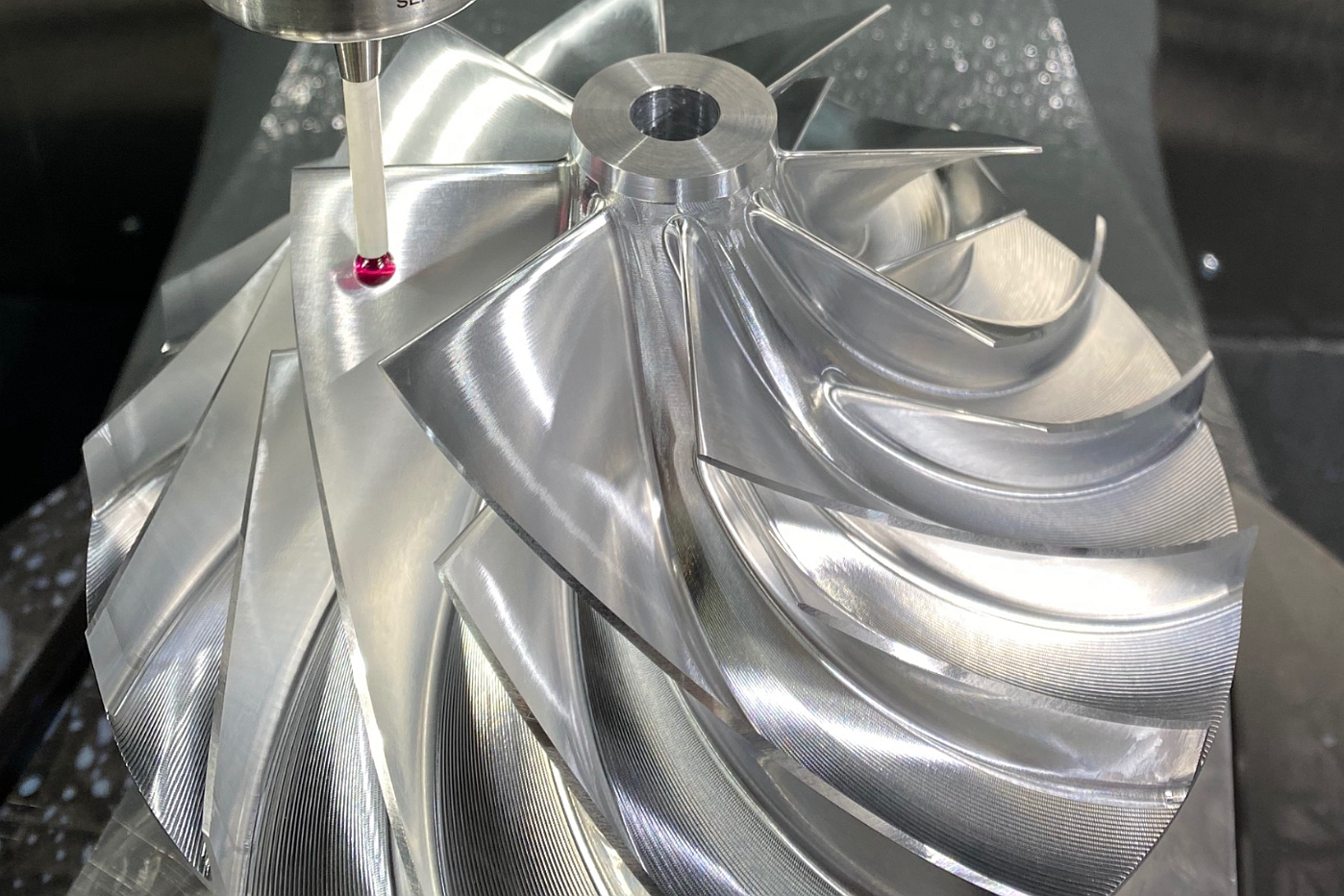Superalloy CNC Machining for High-Temperature Turbo Applications
High-Temperature Turbo Component Demands
With the rise of advanced propulsion systems and high-efficiency turbomachinery, CNC machining of superalloys has become essential for producing critical turbo components. In 2024, global demand for high-temperature turbo assemblies surged by 28%, driven by aerospace, power, and marine sectors.
Neway AeroTech specializes in machining superalloys such as Inconel, Rene, and CMSX series for turbo housings, impellers, and exhaust diffusers that must endure 1000–1100°C operating conditions with extreme thermal cycling and mechanical loads.
Core Technology of Superalloy CNC Machining
Machining high-temperature turbo components requires advanced thermal management and dimensional control. At Neway AeroTech, our technologies include:
5-axis CNC machining for complex bladed geometries and turbo impellers.
In-process tool wear monitoring for maintaining profile accuracy within ±5 μm on high-load machining paths.
High-pressure coolant systems (up to 100 bar) to manage heat in deep cavity and slot machining.
SEM and CMM inspection to verify microstructure integrity and dimensional conformance.
All operations conform to AS9100D, NADCAP, and ISO 10791 standards for critical aerospace and turbo machinery parts.
Typical Superalloy Materials in Turbo Machining
Alloy | Max Service Temp (°C) | Tensile Strength (MPa) | Common Turbo Applications |
|---|---|---|---|
980 | 930 | Diffuser housings, turbo ducts | |
980 | 1450 | Rotating shafts, turbo bearings | |
1140 | 1000 | Turbo impellers, nozzle guide vanes | |
1175 | 840 | Combustor rings, turbo casings |
These materials are selected for their creep resistance, oxidation stability, and mechanical performance in cyclic thermal loading.
Case Study: CNC Machining of Turbo Impeller and Diffuser Housing
Project Background
A global aviation client contracted Neway AeroTech to produce turbo impellers and exhaust diffuser housings using Inconel 625 and CMSX-4 for a compact turboprop system rated at 1100°C. Required tolerances included ±0.008 mm on blade spacing and <0.005 mm flatness for sealing interfaces.
Typical Turbo Component Models and Applications
Component Model | Description | Material | Max Temp (°C) | Industry |
|---|---|---|---|---|
TPI-300 | 11-blade turbo impeller with 3D milled flow channels and 6 μm radial tolerance | CMSX-4 | 1140 | |
DSH-250 | Diffuser shell with 8 radial vanes and a 0.4 μm sealing surface finish | Inconel 625 | 980 | |
TRS-180 | Precision-machined turbine shroud with ±5 μm concentricity and 2 mm wall thickness | Rene 88 | 1050 | |
ETC-100 | Transition cone with 5-axis contouring and HIP-treated walls for thermal fatigue resistance | Hastelloy X | 1175 |
Each model was designed with specific dimensional constraints and machining strategies tailored to high-temperature performance under dynamic loading.
CNC Machining Challenges of High-Temperature Turbo Components
Cutting forces exceed 800 N due to hardened gamma-prime phases in CMSX alloys and dense grain structures.
Blade spacing tolerance of ±8 μm across 360° impellers demands sub-micron toolpath compensation algorithms.
Slot depths exceeding 5×D challenge chip removal and increase tool breakage risk under low-feed conditions.
Thermal conductivity below 10 W/m·K leads to localized heating and distortion in high-density turbo geometries.
Residual stress of up to 400 MPa from prior forging must be relieved before finish machining to avoid deformation.
CNC Solutions for High-Temperature Turbo Components
Cryogenic cooling at -196°C improved tool life by 30% and maintained surface integrity across all bladed sections.
Trochoidal milling with 10% radial engagement reduced deflection and cutting forces in deep grooves and slots.
In-process probing and 3D scanning ensured 100% compliance of impeller curvature profiles within 6 μm.
HIP processing at 1030°C and 100 MPa closed porosity before final finish milling.
GDMS inspection confirmed composition uniformity within ±0.03 wt%, ensuring thermal cycle durability.
Results and Verification
Manufacturing Methods
Each component began with near-net-shape casting or isothermal forging to reduce stock removal and material waste. CMSX-4 impellers were formed by directional solidification; Inconel 625 housings used vacuum investment casting for uniform microstructure and dimensional stability across 360° rotational symmetry.
Precision Finishing
Final machining involved 5-axis CNC machining and microstructure preservation via low-force cutting. Deep hole drilling with H7 tolerance was performed using high-speed carbide drills to 6×D depth. Achieved dimensional accuracy: ±5 μm profile tolerance, Ra 0.4 μm surface finish, and 0.006 mm concentricity for rotating components.
Post-Processing
Components underwent HIP treatment at 1030°C and 100 MPa for 4 hours to eliminate internal porosity. Thermal stress relief and heat treatment followed. Optional TBC coatings were applied to enhance oxidation resistance for parts exposed to exhaust flows exceeding 1050°C.
Inspection
Dimensional and structural integrity were verified using CMM, SEM analysis, and GDMS. Additional X-ray inspection ensured internal consistency, while fatigue and thermal cycling tests validated service life exceeding 2000 hours under operational load.
FAQs
What surface finishes are achievable for turbo impellers made from superalloys?
How do you ensure thermal stability during turbo part machining?
Can you CNC machine hollow-core or thin-wall turbo components?
What post-processing steps are essential for CMSX turbo parts?
How is tool life managed when machining high-strength superalloys?

